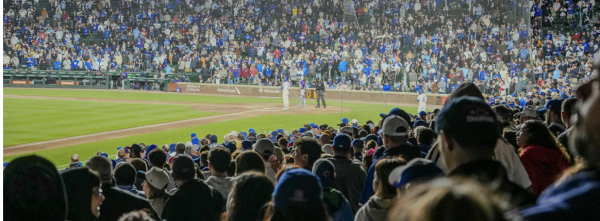MLB World Series 2025: A Look Into Parlay Betting This Season
Baseball fans and bettors are already circling October on their calendars. The 2025 MLB World Series promises high-stakes drama, standout performances, and plenty of action at the sportsbooks. As the postseason picture becomes clearer, interest in multi-leg betting strategies has grown sharply. One option drawing attention is the parlay, which offers high rewards for sharp, calculated bets.
Parlay betting isn’t new, but it’s finding fresh momentum thanks to mobile platforms and live betting features. More bettors are bundling outcomes across games, teams, or player stats for bigger payouts. This World Series season, the trend is shaping how fans engage with both the sport and the odds. The excitement of stacking multiple predictions into a single ticket is hard to ignore.
In this article, readers will find five key insights into parlay betting for the 2025 MLB postseason, including strategy, value, and what numbers to watch.
1. Leg Count Strategy
In MLB parlay betting, the number of selections, or “legs,” is the backbone of any wager. In MLB postseason play, bettors typically choose between two and six legs. Each added leg increases the potential payout, but it also adds more risk. Some bettors link alternate run lines with player totals for more tailored odds. The goal is to hit a balance between value and likelihood.
For World Series games, low leg counts often yield smarter plays. A two-leg parlay with strong data backing each pick can offer solid profit without the unrealistic expectations that come with longer chains. The postseason’s smaller sample of games means tighter betting lines, which can make massive parlays less viable.
2. Payout Ratio Calculations
Payouts in parlays grow exponentially with each leg, which is why this type of bet attracts so much attention. A standard two-leg MLB parlay might return at +260 odds, while a five-leg could push into +1000 or beyond. Bettors should understand the true value behind these ratios. Books calculate odds based on implied probabilities, which don’t always reflect reality during tight World Series matchups.
Smart bettors often use payout calculators or models to understand their expected value. In high-stakes games, where elite pitchers and deep bullpens play a bigger role, the range of likely outcomes narrows. That makes accurate pricing even more important. A small difference in payout ratio can mean a lot when each pick depends on razor-thin margins, so learn to read the math, not just the ticket.
3. Risk Factor Index
Risk in parlay betting isn’t just about the number of legs. It also depends on how correlated your picks are. For example, parlaying a team’s win with their pitcher’s strikeout total might seem smart, but if one fails, they often both do. This overlap can increase your risk factor. In the World Series, where teams adjust quickly and managers make bold decisions, high correlation can become a liability.
Some platforms and tools now offer risk indexing, showing bettors how much risk they stack in a single bet. This is critical for those building parlays during the postseason. Avoid overloading on highly related events. Spread selections across different angles, including one pitcher stat, one team result, and maybe one total run line. This approach can lower risk without completely gutting potential return.
4. Team Combination Trends
Public betting behavior often follows hot teams, which shapes parlay trends. In the World Series, teams with recent blowout wins or walk-off moments become common picks in multi-leg bets. In anticipation of this traffic, books adjust quickly and shade odds slightly. Many platforms like FanDuel’s Daily MLB Game Highlights, often amplify these moments and help drive betting interest even further.
While following hot teams may feel safe, it often results in overvalued parlays. Parlay bettors should target value in overlooked matchups or teams coming off narrow losses. Instead of stacking favorites riding momentum, pairing one popular pick with less obvious selections that show strength in key stats like bullpen performance or strikeout-to-walk ratios is often smarter.
5. Market Volume Shifts
Sharp bettors watch line movement, but market volume is just as important. Large swings in betting volume often signal shifts in public sentiment or injury-related speculation in parlay betting. These changes can come fast during the World Series since lineups are announced later, pitching rotations adjust, and weather might play a role.
Some books now show where the most parlay action is happening. If one leg absorbs a disproportionate amount of volume, that could indicate overexposure. Bettors can use this to fade the public or wait for better odds before placing their bets. In short, volume shifts help frame the bigger picture.
Final Inning Thoughts
Parlay betting during the 2025 MLB World Series offers excitement, challenge, and potential for strong returns when approached carefully. Knowing how many legs to include, how to evaluate payout ratios, manage correlated risk, read team trends, and track market movements can all sharpen a bettor’s edge. Take the time to build each ticket with strategy this postseason, not just hope.
|
|















